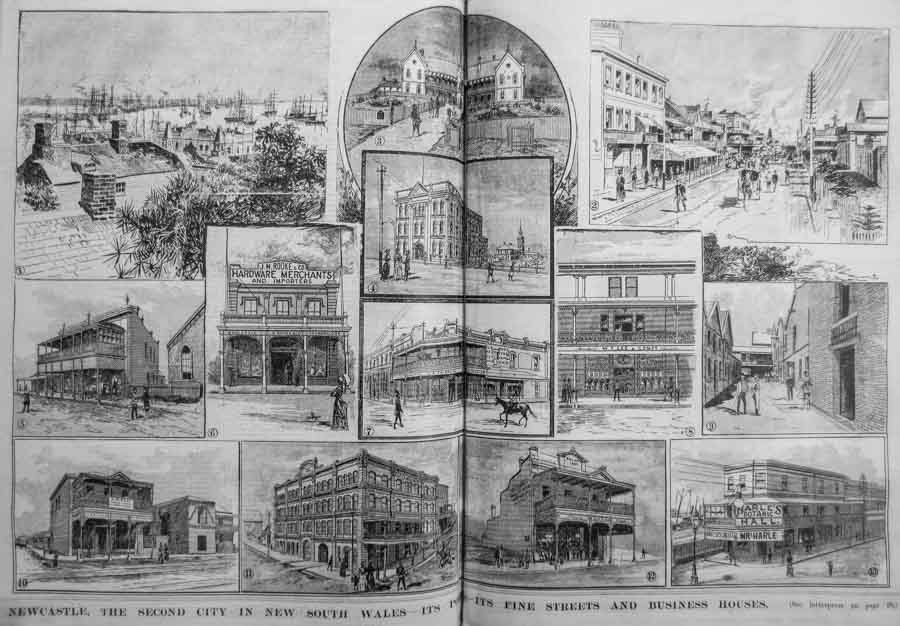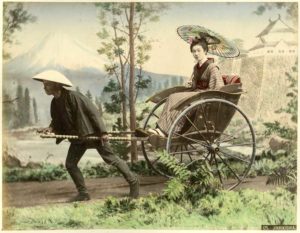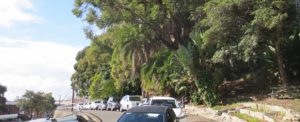The Town and Country Journal was an interesting weekly newspaper which ran from 1870 to 1919. On April 11, 1891, it published an illustrated article about some businesses in Newcastle, NSW. The article reads like a modern-day advertorial, leading to a suspicion that the subjects may have paid for the glowing accounts of their business enterprises.
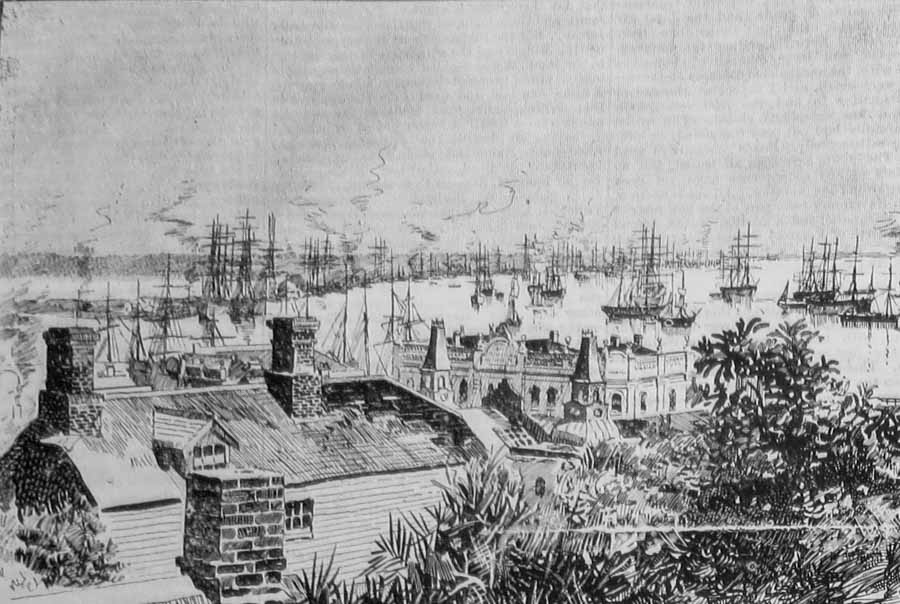
The largest and by far the most important city of this colony after Sydney the capital is Newcastle, and in this issue some excellent views of the principal streets and places of business are given. Newcastle is the great emporium of the coal trade in the southern hemisphere, and on more than one occasion the annual export and import tonnage has exceeded any city south of the line. Of late years the wool trade of this port has been increasing by leaps and bounds, and for this year alone, up to date some 50,000 bales have been exported. Situated at the mouth of the Hunter River, in the very centre of a vast coalfield as yet unknown in extent, and the natural outlet for the trade of one of the largest and finest agricultural districts in Australia, Newcastle is destined to be a city of vast importance. More than half the coal at present raised in the 27 coal mines in the district is exported to foreign countries, the western slope of the United States and South America being the chief markets. During the past five years the progress of the city has been nothing short of marvellous, and now it contains well-paved streets lined with many fine buildings. It bears the distinction of being the first city in Australia to be exclusively lighted by electricity, and when the plant was placed in full working order at the beginning of this year the streets for ever lost the unenviable name of being badly lighted.
The population of the city is 21,600 and, with the suburbs of Wickham, Hamilton, Tighes Hill, Waratah, Wallsend, Lambton, Adamstown, and the Glebe, it is estimated at 52,400. The streets are now well-paved and clean, and being situated in a fine position, the city is rapidly becoming a fine one and worthy to rank second to the metropolis. Last year 2,250,000 tonnes of coal were raised , a decrease of 400,000 tonnes as compared with the previous year; but that result was owing to the strike, which closed the pits for three months. The coal trade is at present flourishing, and for the four weeks ended February 21 225,000 tonnes were exported. Many handsome buildings are in course of erection, the principal ones being a new theatre, costing £18,000; St Georges Masonic Hall, £7000; a new courthouse, £11,500. A cathedral is also to be erected for the church of England on an eminence overlooking the whole district, and the sum of £9000 is in hand. The plans show a noble edifice, second to none in Australia; and the first contract for work, costing £17,000 is already let. In and around Newcastle many industries flourish, such as iron foundering , brickmaking, sawmilling, and a host of others; while the largest biscuit factory in the colony, that of Mr W. Arnott, is almost in the city. Newcastle is the centre of the northern railway system, and owing to the cheapness of coal the commissioners are finding out that it is better to have as many workshops as possible in the locality of Honeysuckle Point. There are three fast passenger trains to and from the metropolis daily, doing the distance, which is 102 miles, in three hours and a quarter, while many lines of fine steamers connect the port with all the centres of the world. Our illustrations will give readers a far better idea of the importance of Newcastle than can be conveyed by a written description. Although it is more remarkable for business than beauty, it is by no means without pretty bits of scenery.
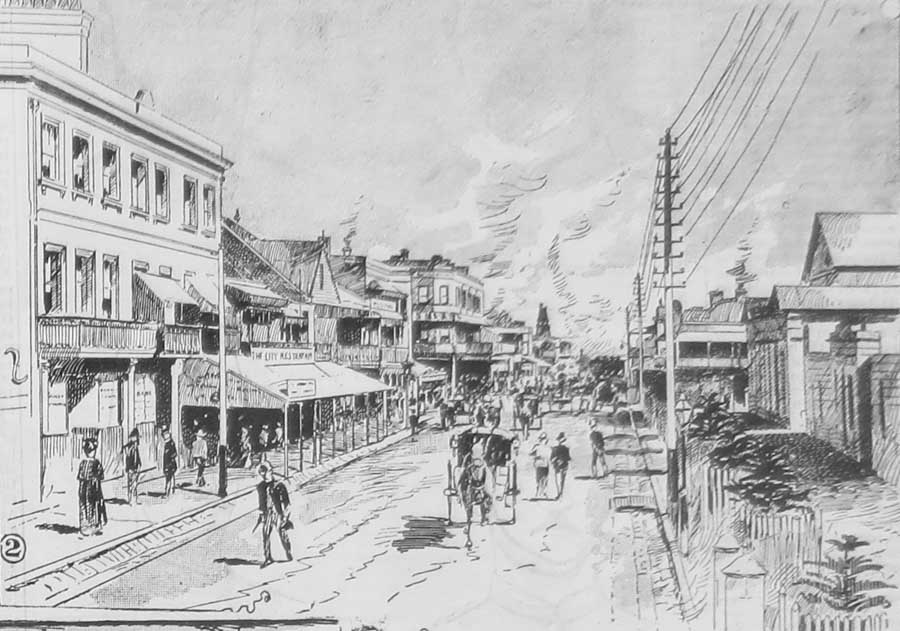
For instance, illustration number one is a capital view of Newcastle Harbour , and number 2 is a picture of Hunter Street, showing that the people can boast of at least one broad and well paved thoroughfare.
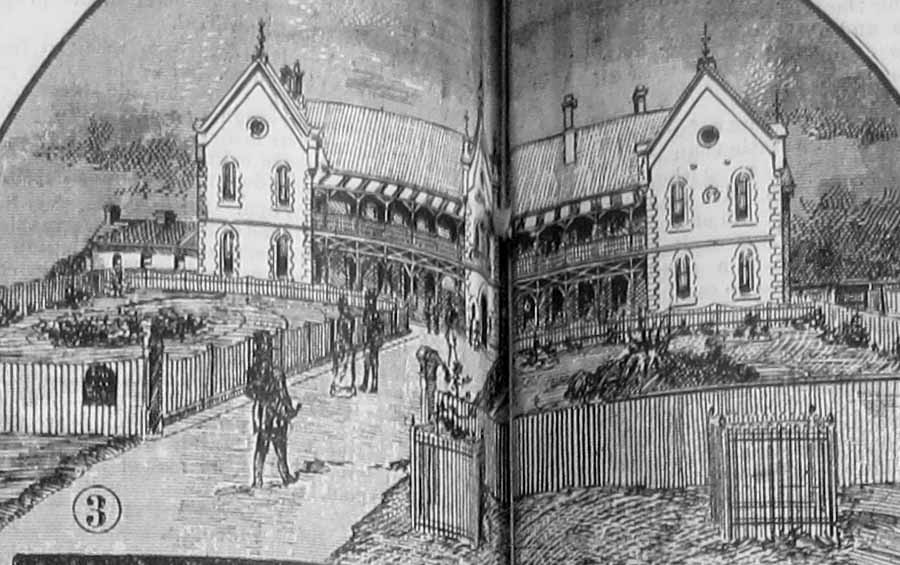
The people of Newcastle are justly proud of their hospital, illustration number 3.
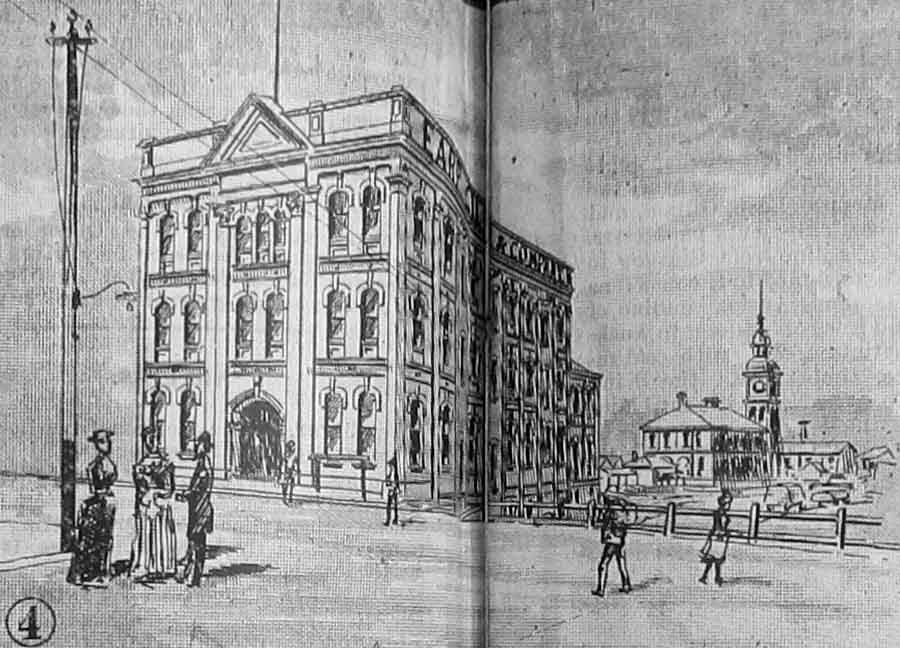
Illustration number 4 is a specimen of one of the noble business establishments which adorn the city. The building represented was erected for the firm of Earp Gillam & Co in 1888. It contains the largest storage capacity of any warehouse north of Sydney. In addition to this structure the firm have iron stores in Telford St, for the storage of heavy goods. The business was originated in 1883, and at the present date in the importing, exporting and shipping trade of the firm is one of the largest in New South Wales. The increase of trade with Europe led to the opening of a branch of the firm at Billiter house, Billiter Street, EC, London, in 1888. Amongst the large number of agencies held by the firm may be named those of the following: the Australian mutual shipping company, which dispatches a vessel to Newcastle with general cargo every two months, consigned to Messrs Earp Gillam and Co; The Baltic timber shipments of Messrs Aitken, Lilburn and Co’s line from Glasgow to Newcastle, which were consigned to the firm; as also vessels of the Hamburg-Australian line of clippers. New Zealand lines of sailers to Auckland, Napier, Bluff, Lyttelton etc with coal, returning with produce, timber etc; The King Georges Sound coal Company; the Newcastle Coal Mining Company (agency in London); Messrs Earp Gillam & Co are agents in Northern NSW for 15 flour mills in South Australia , Victoria and New Zealand, among them may be mentioned those of Messrs John Dunn and Co, James Gillespie and Co Ltd, W.S. Kimpton and Co Ltd, Harvey, Dunn & Co Ltd. They also represent Messrs Brooks Shoobridge & Co (manufacturers the Anchor brand of cement), Messrs Read Brothers (bottlers Bass’ Ale and Guinness stout). Messrs R. Millar & Co (Baltic timber shippers), Hogarth & Co (manufacturers of pickles, jams etc), Thompson, Marshall & Co (brewers), the Oriental Tea Co etc etc.
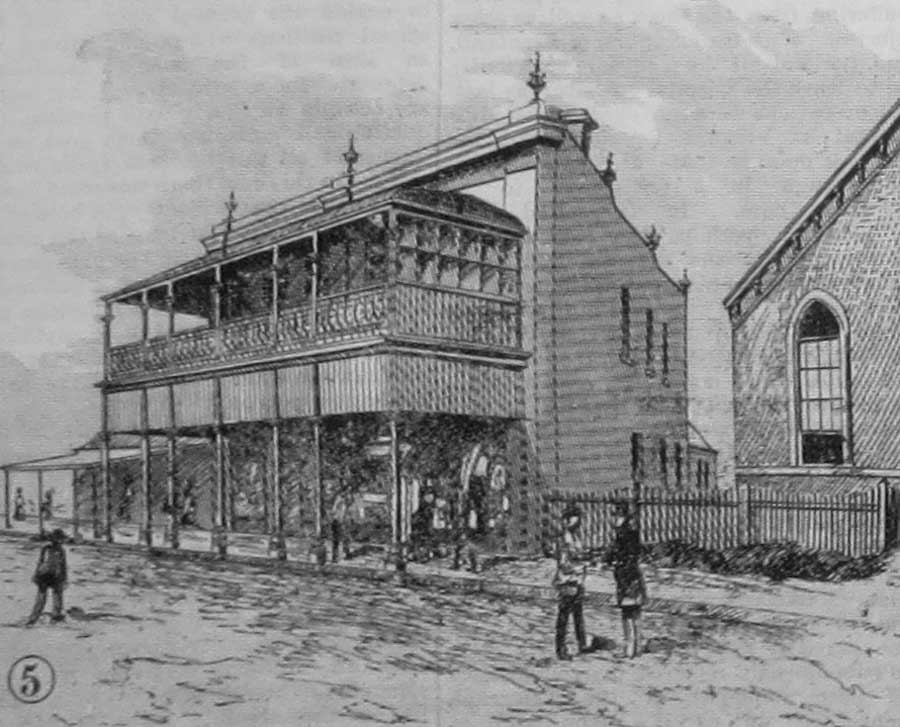
Illustration number 5 is that of the premises occupied by Mr George Froome, who has been long established, and his business premises are among the finest in Wallsend. His stock consists of all classes of groceries, drapery, boots, ironmongery, crockery, and pot wear, furniture etc; and his business extends to all parts of the district. The building is one of two storeys, and is very handsomely finished. The shop has a double front and is fitted with full sized plate glass windows. Taken as a whole the establishment is most complete and is a credit to the town.
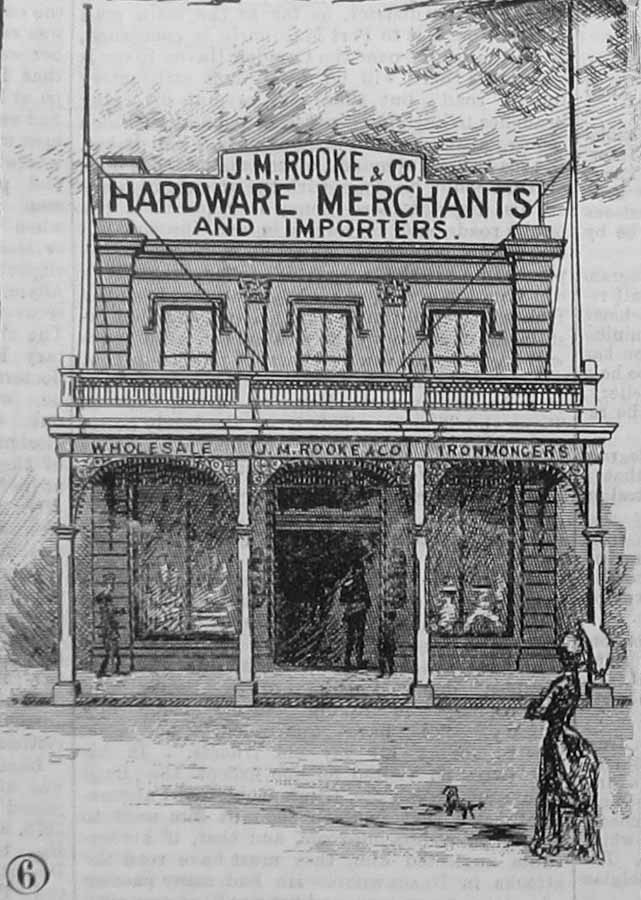
The business premises of Messrs J. M. Rooke & Co, a well-known firm, are represented in illustration number 6. The building is situated in Scott street, and in close proximity to the railway station. In ships’ chandlery and marine stores of all descriptions the stock is not surpassed in any of the metropolitan houses, hence a very large amount of business is done. Vessels of all kinds are supplied with every requisite, and the stock being secured at short intervals from England is always of the best description. The premises are very commodious and handsome, and the firm is the largest and most thriving of its kind in the northern districts.
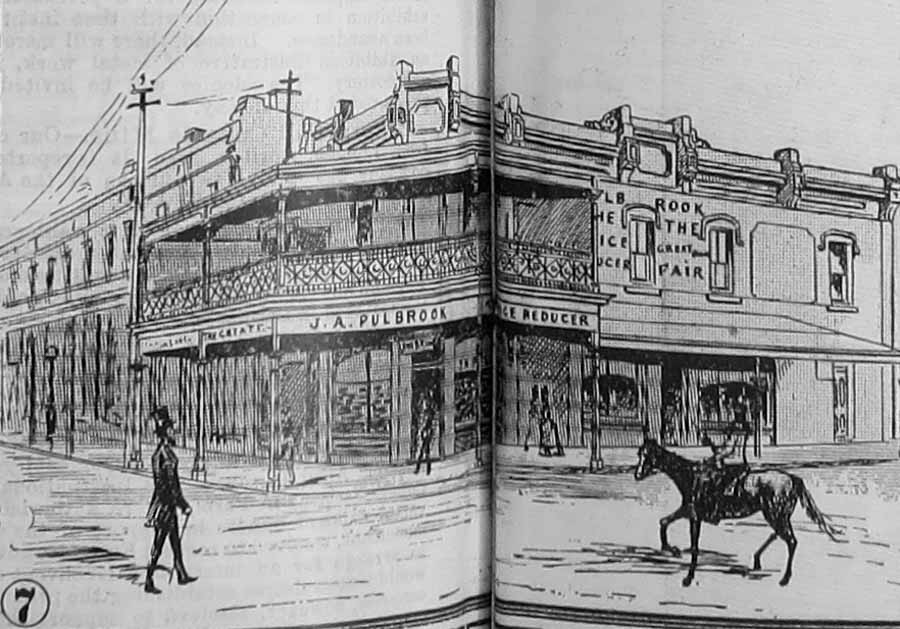
Mr J.A. Pulbrook’s boot warehouse, the subject of illustration number 7, is situated at the intersection of Hunter Street West and Union Street and is one of the most commodious and attractive business establishments of its class in the northern districts. It is constructed of brick and has a large frontage to both streets. There are really two shops, both being fitted with exceedingly fine plate glass windows, in which a portion of the stock is splendidly arranged. Mr Pubrook is a direct importer of many years’ standing, and is widely known as a smart , energetic and courteous businessman. He went to Maitland upwards of 12 years ago, and carried on his business there in one of the best houses in the town for over nine years. Besides securing a good local trade, he was successful in extending his business operations right through to Tenterfield, and these increased so rapidly that he found it desirable some two-and-a-half years ago to remove to Newcastle to cope with them. Since that time he has made the country orders a speciality, and this portion of the business occupies almost the whole of his personal attention. The Newcastle and district trade is also a very fine one, the premises being splendidly situated for such a connection. Besides the importing Mr Pulbrook carries on the manufacturing business very extensively, and his wonderful success in all departments of the trade is a sure indication of the quality of goods he keeps in stock.
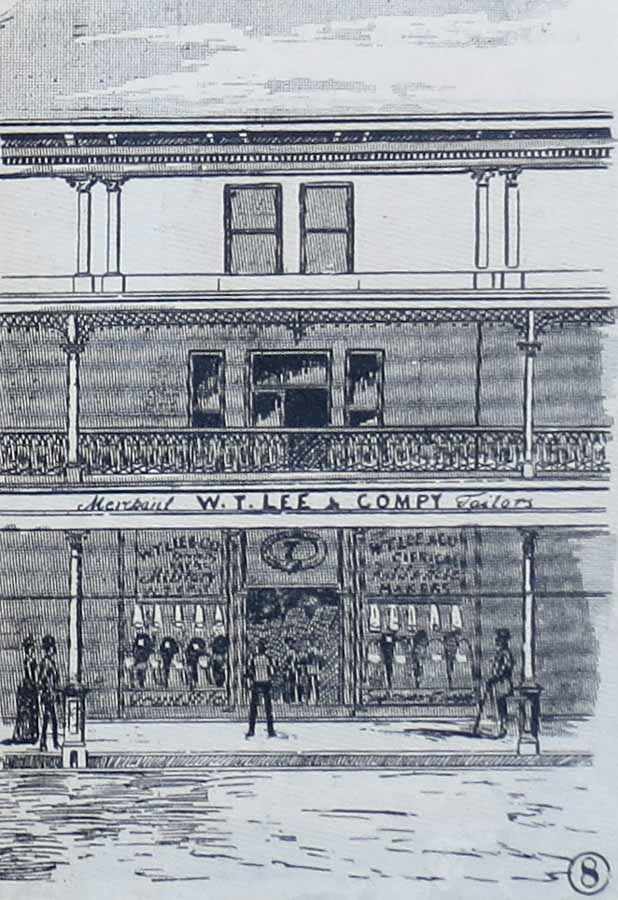
Mr W.T. Lee is one of the leading merchant tailors in the city, and is well and popularly known throughout the whole district. He employs upwards of 25 hands, and has imported several cutters direct from London. His business establishment is replete with every convenience, and is filled with a very choice stock. The premises (see illustration number 8) are situated in the best part of Hunter Street and are fitted with very handsome plate glass windows of a large size. He makes a specialty of military and American work of all descriptions, and has a monopoly in both departments of the trade.
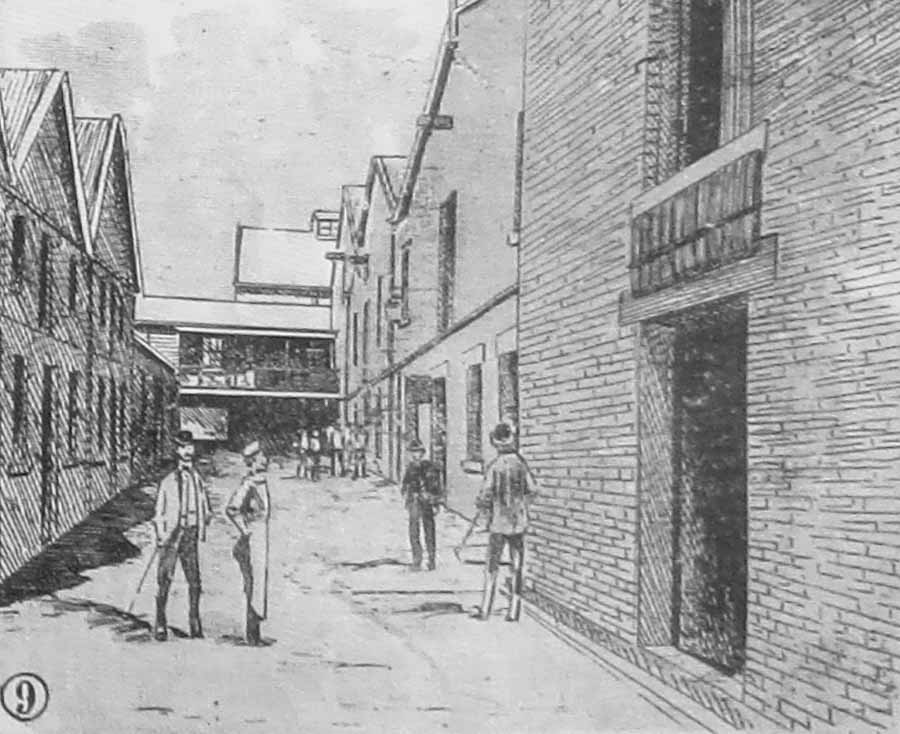
Arnott’s biscuit factory (a side view of which is given in illustration number 9) is now considered one of the sights of Newcastle. Who has not heard of Arnott’s biscuits? They are a household word in New South Wales. The works cover a very large area of ground, extending from Melville Street on the one side to Corlette Street on the other. On entering the works from the Melville Street entrance the visitor at once sees the machinery in full operation; he goes from department to department and observes hundreds of men and boys busily engaged at the various machines in making the great variety of biscuits necessary to satisfy the wants of the public. It is noticed that in several departments they are engaged making one kind of biscuit only: this is the celebrated Milk Arrowroot, of which the firm turns out about 16 tons per week. A visit is then made to the mixing room, where it is noticed that, owing to the excellence of the machinery, the hands never come into contact with the dough, and everything is scrupulously clean. After going through the mixing rooms the visitor passes to the fancy department. Here he sees the rich Macaroon, or the dainty Ladies’ Finger biscuit being made, besides other kinds too numerous to mention. The visitor next passes on to the freezing rooms, where the butter is stored. A very large freezing machine is used, and on the hottest day in summer the visitor can always walk into a temperature of 31 or 32 degrees. This temperature is necessary to keep the butter firm and good. The firm do a very large business in this department, and buy some 200 tonnes per year and store it in the cool-rooms to keep it sweet and fresh. A visit is then paid to the carpentering works. All the cases are made on the premises, and a staff of carpenters are kept all the year round. The tinsmith shop comes next. Sixteen smiths are constantly engaged making the tins necessary for the packing of the biscuits. In the packing departments, which are situated on the second storey, from 90 to 100 girls are constantly employed, the number of hands employed altogether amounting to about 350. The works are under the sole management of Mr Leslie Arnott.
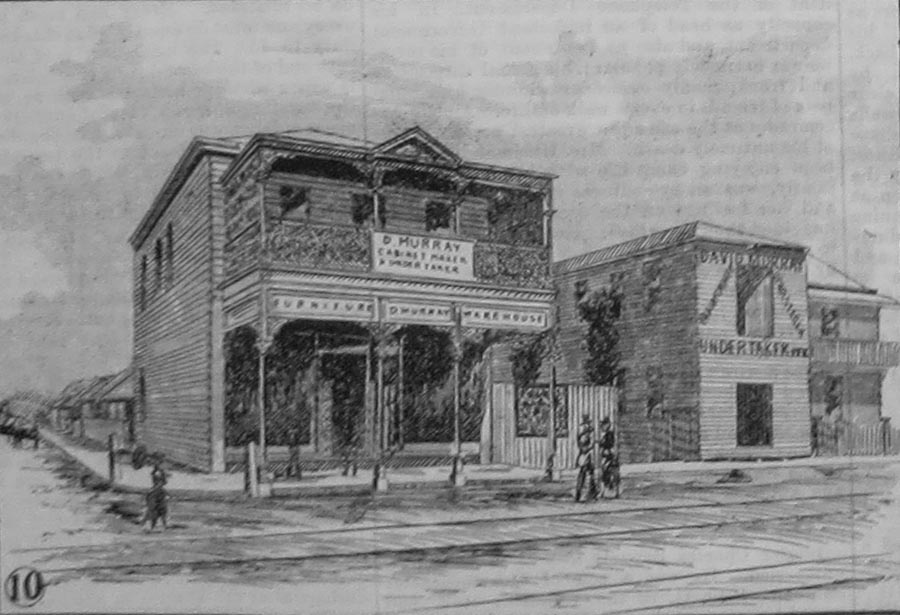
Mr David Murray, the well-known furniture importer of Hamilton, has one of the finest warehouses of its kind in the northern districts. It is constructed on the arcade principle, and contains as choice a supply of domestic comforts and ornaments as any of the metropolitan houses. The building is in the very best part of a municipality which is increasing in population and importance at a marvellous rate; and his energetic owner has plainly shown the amount of enterprise he possesses in securing such a very handsome structure. Number 10 is an excellent illustration of these premises.
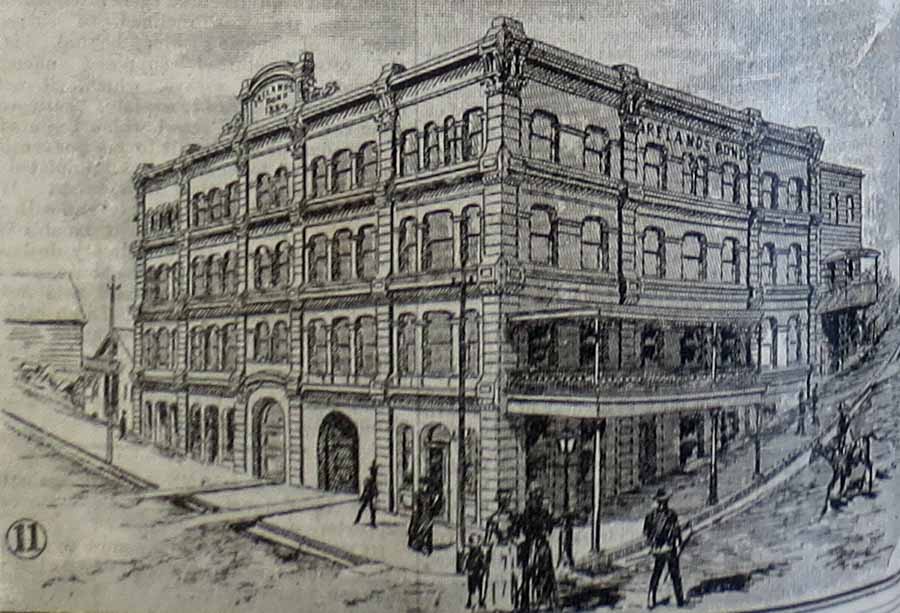
The palatial warehouse, the subject of illustration number 11, situated at the corner of Hunter, King, and Crown streets, is owned by the estate of the late Mr J. Ireland, and the gigantic and constantly increasing wholesale business in every branch of the grocery and produce trade fully warrants the proud assertion that the firm is one of the largest and most prosperous in Australia. The ground floor is taken up by the wholesale store, the assistant manager’s offices, the sale and sample rooms, packing and delivering departments and offices devoted to the use of portion of the clerical staff. Adjoining this is a right of way leading from Crown Street to Brown Street, and on the right of this again the refrigerating rooms are situated. They have lately been completed at an enormous cost, and the plant and chambers are so commodious that immense quantities of butter are kept constantly stored. The late Mr J. Ireland was the first merchant to introduce print butter into Newcastle, and the firm continues to hold a large monopoly. The print room is a perfect picture of neatness, this part of the business being under the personal superintendents of the assistant manager, who has had many years’ experience in the dairy and general produce industry. The supplies of butter come direct from the South Coast districts, and are frozen and distributed to the trade as required. The present output is nearly seven tons per week, but it is rapidly increasing.
Next in order is the free and bonded warehouse which is situated at the intersection of King Street and Perkins Street, and is one of the largest and most imposing buildings in Newcastle. The ground floor is occupied by the accountant and clerical staffs’ offices. On the first floor is the manager’s office, and the corresponding room on the second floor is devoted to the blending and packing of teas, in which the firm do a wonderful business, having several registered brands. This department receives the special attention of the manager, who is acknowledged to be one of the best tea experts in the colony. The remainder of this portion of the premises is used for the storage of immense stocks of salt, flour and other milk produce. It is divided into seven compartments, and its capacity is over 1200 tons measurement. The warehouse itself presents a very imposing appearance, being built of brick with cement facings. It consists of four floors, each being 100 feet by 75 feet, and the storage capacity of the whole building is about 5000 tonnes. The firm finds employment for between 80 and 90 hands, and has 26 drays and wagons and 40 horses continually working. The business is carried on by a trustees under the management Mr D.J. M’Lean, with Mr H.W. Lee as assistant manager. Both of these gentlemen have had very large experience in the metropolitan trade, and under their guidance the business is increasing with wonderful rapidity. It was originally founded by the late Mr J. Ireland about 25 years ago, and it is owing to the indomitable perseverance and gigantic business capacity displayed by him that it has reached its present enormous proportions.
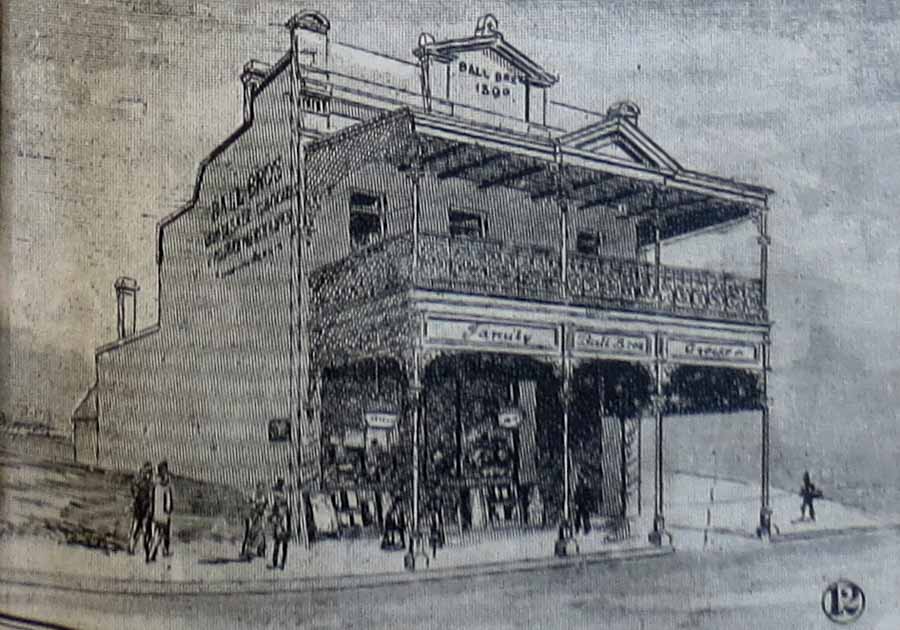
The enterprising firm of Ball Brothers have recently erected new premises facing the Maitland Road, which is really a continuation of Hunter Street West. These are the subject of illustration number 12. They are now doing a very large wholesale and retail grocery business, and are extending their operations daily. Like the larger mercantile firms they import a considerable quantity of their goods direct, and their customers reap the benefit. The building shown in the illustration is constructed of brick, and is very valuable addition to the locality.
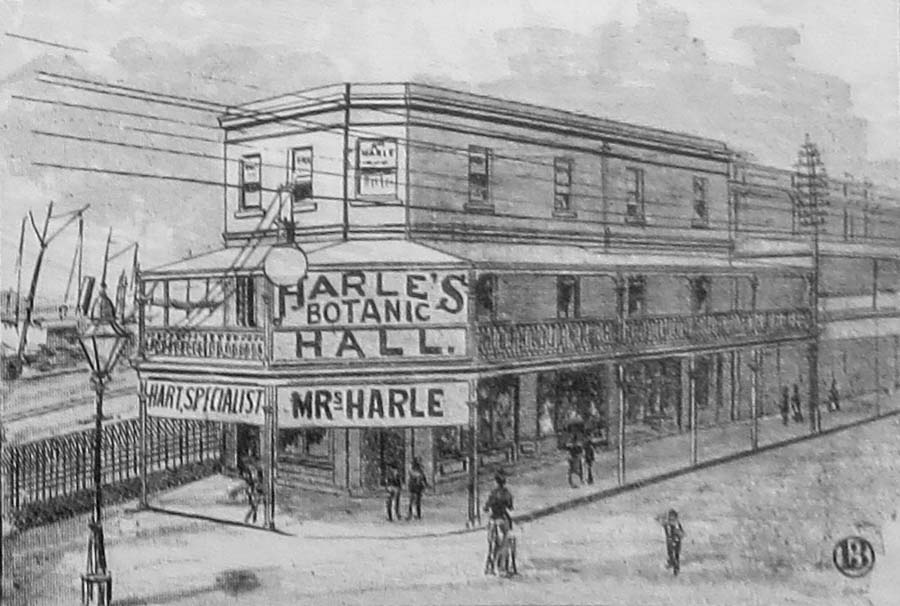
The business carried on by Mrs Harle is the subject of illustration number 13. These premises are situated in Hunter Street, opposite Perkins Street and adjoining the tram terminus. As a herbalist Mrs Harle has achieved considerable notoriety in Newcastle and district, many of her cures are reputedly really wonderful. The shop is filled with an immense supply of patent medicines, toilet requisites, and choice novelties of varied kinds and the goods are so tastefully arranged that the shop is a credit to the main thoroughfare.

